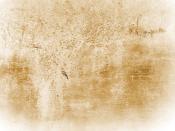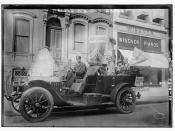Symbols are utilized as an enhancement tool to stress the theme of each story. In the story "Young Goodman Brown," Hawthorne uses the imagery of nature to develop the theme of appearance vs. reality. This is because the forest plays a role in exposing the reality that Goodman Brown rejects. He went in a deceived man and exits with a shocking new view. The majority of Hawthorne's symbols describe religion (both good and evil).
Symbolism runs rampant through the text of "Young Goodman Brown." Hawthorne relies heavily on objects to portray Satanism. The object of obvious Satanism is the staff mentioned throughout the story. It is clearly identified when the old traveler throws it down in the sentence "it assumed life, being one of the rods which its owner had formerly lent to the Egyptian Magi" (167).
According to the Bible, sorcerers with magic powers change their rods into serpents.
The story contains symbolic acts. The devil's comments during his sermon such as "Evil is the nature of mankind. Evil must be your only happiness" (171) is a clear symbolic act of Satanism, although Satanism is never mentioned by the author.
Likewise, the imagery of the serpent can be interpreted as a representation of deception. Of great significance to the story, the serpent-like staff carried by the mysterious figure personifies Goodman Brown's false impression of the unknown in human nature. Brown has been deceived by a highly programmed society to believe that humans are upright, but he comes to realize that when the curtain is pulled down, their evil nature manifests. The serpent is a suitable representation for deceit as they can appear one way, then shed their skins and appear differently. According to The Old Testament, it was the serpent that tricked Adam...
![[Portrait of Juan Tizol(?) and Lawrence Brown(?), Aquarium, New York, N.Y., ca. Nov. 1946] (LOC)](https://s.writework.com/uploads/7/77189/portrait-juan-tizol-and-lawrence-brown-aquarium-new-york-n-thumb.jpg)

